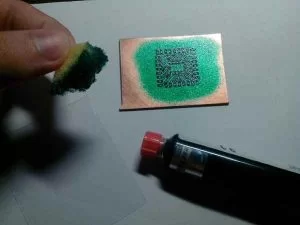Why order PCBs from other nations when you can make them in 10 minutes at home?
This is not a comprehensive tutorial, but rather a collection of experiments and examples on how to construct PCBs at home quickly and easily.
Note: This isn’t the first time I’ve built a PCB.
Because projects are approaching, I decided to put certain things to the test today, such as my ability to create a small board utilizing EAGLE and SMD components. An ATMega SMD microcontroller in this situation. I was convinced that I couldn’t construct boards with SMD components, so I decided to give it a shot and see what happened.
I used to deal with DIP ATMega328 microcontrollers, resistors, regulators, and other basic components. As a result of my near-perfect skills dealing with those components, I decided to save everything and upgrade all of my hardware/components to SMD.
Hardware mode
And this is what I came up with; I tried to keep it as minimal as possible.
And this is what I came up with; I tried to keep it as minimal as possible.
After that, I turned on my Laser printer, grabbed some glossy paper, and exported the circuit from Eagle in black/white and mirrored with the TOP side to a *.pdf file.
I printed the circuit on glossy paper and grabbed a scrap of copper PCB that I had lying around, wiped it thoroughly with water and soap using a hard sponge, cut the paper into a little good shape, and began ironing it on the copper PCB.
After 10+ minutes of ironing, pressing the iron tip into the PCB paper really hard, I grabbed the PCB and submerged it in water for 2 minutes to get the paper wet and pilled easily.
Pill the paper gently, then soak it in water and pill it again until the PCB is clean.
Please accept my apologies for the video’s poor lighting!
You’ll end up with a nice-looking board. You can see what happens in the bottom right corner pin if you don’t press the tip of the iron in all the paces of the paper in the (final picture).
Of course, the next step is to etch the copper around the circuit to dissolve it and achieve the final aesthetic, but I ran out of liquid/solid rust (or whatever it’s called) to complete the etching procedure.
UV Mask
Because it was a test for me, I decided to put the UV mask to the test as well. I used a piece of sponge to apply the UV paste to the PCB, then cut a normal size translucent plastic sheet to place on top of the paste/PCB to make the final look smooth.
After that, I held handmade 10x UV LEDs above the PCB for 5+ minutes to allow the paste to cure and firm, then slowly pilled the plastic sheet to get a great looking masked PCB.
Remember to let the PCB mask cure more outside the sun or in a dry place after the UV LEDs 5+ minute procedure and pilling off the plastic sheet (the paste is hard as a rock), or put it in the oven for a few minutes to dry rapidly and be 100% cured.
Youtube:
Schematics
PCB EAGLE
If you’d want to give it a shot, here’s the original pdf file I created and utilised in this project with EAGLE.







